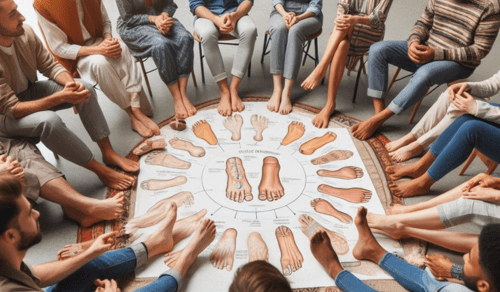A sprained ankle arizona is not just a simple phrase. It’s a lens through which we will start our journey into the world of podiatry across cultures. The way we treat a sprained ankle could be worlds apart from methods in other parts of the world. This blog post will take you on a fascinating journey. We will explore the diverse approaches to foot care. From traditional healing methods to modern medical techniques, it’s time to step into the wide, varied world of podiatry.
Cultural Influence on Podiatry
How people view feet and their care varies greatly from culture to culture. In some societies, feet are sacred. In others, they are seen as practical tools. These beliefs shape how podiatry is practiced.
Traditional Healing Methods
Many cultures rely on traditional methods of healing. These methods have been passed down through generations. They often blend natural remedies with spiritual beliefs. In China, for example, reflexology is commonly used to treat foot problems. This involves applying pressure to specific points on the foot to promote healing elsewhere in the body. In contrast, Native American healing practices may involve herbal remedies and spiritual rituals.
Modern Medical Techniques
Meanwhile, modern medical techniques dominate. Doctors use X-rays, physical therapy, and surgery to treat foot problems. They base their treatments on the latest scientific research.
A Comparative Table of Podiatry Practices
The table below compares some common podiatry practices across different cultures:
| Culture | Common Practice | Philosophical Basis |
| Arizona, USA | Modern Medicine | Scientific Research |
| China | Reflexology | Balance of Qi (life force) |
| India | Yoga | Holistic Health |
As we can see, podiatry practices are influenced by cultural beliefs. A sprained ankle in Arizona may be treated with rest, ice, compression, and elevation (RICE). In China, reflexology could be used. In India, yoga exercises might be recommended.
Wrapping Up
The world of podiatry is as diverse as the cultures of our planet. By understanding these different approaches, we can better appreciate the variety of ways that foot health is approached globally. So the next time you twist your ankle, remember: there’s more than one way to heal.





